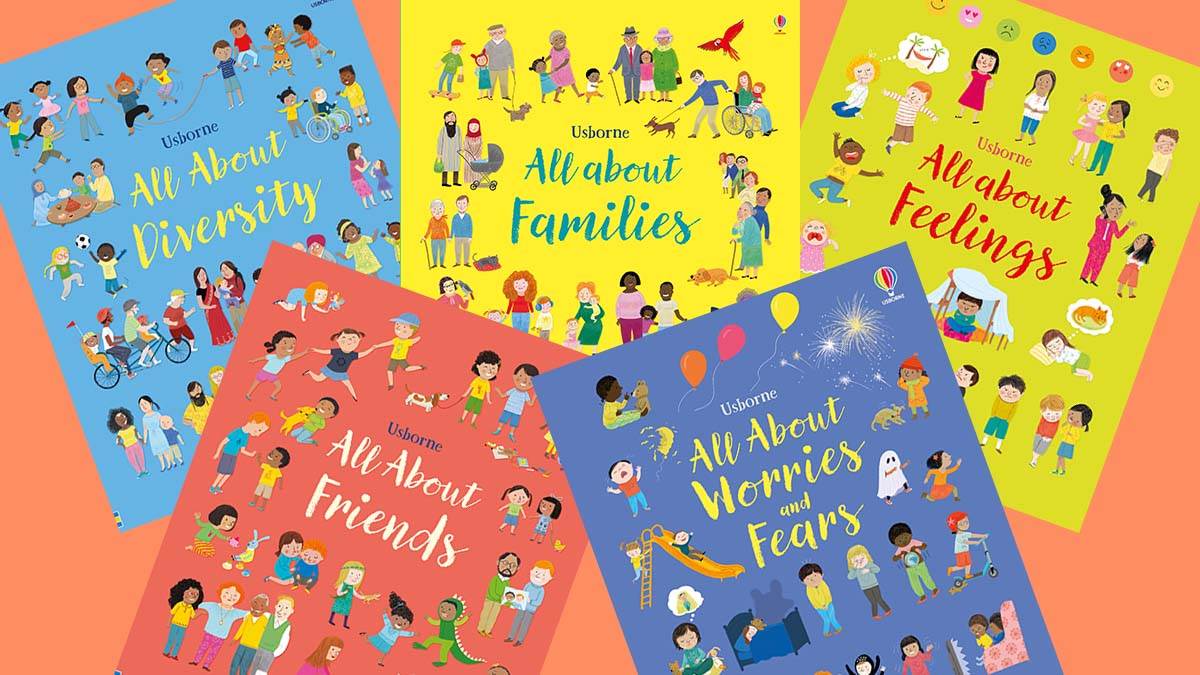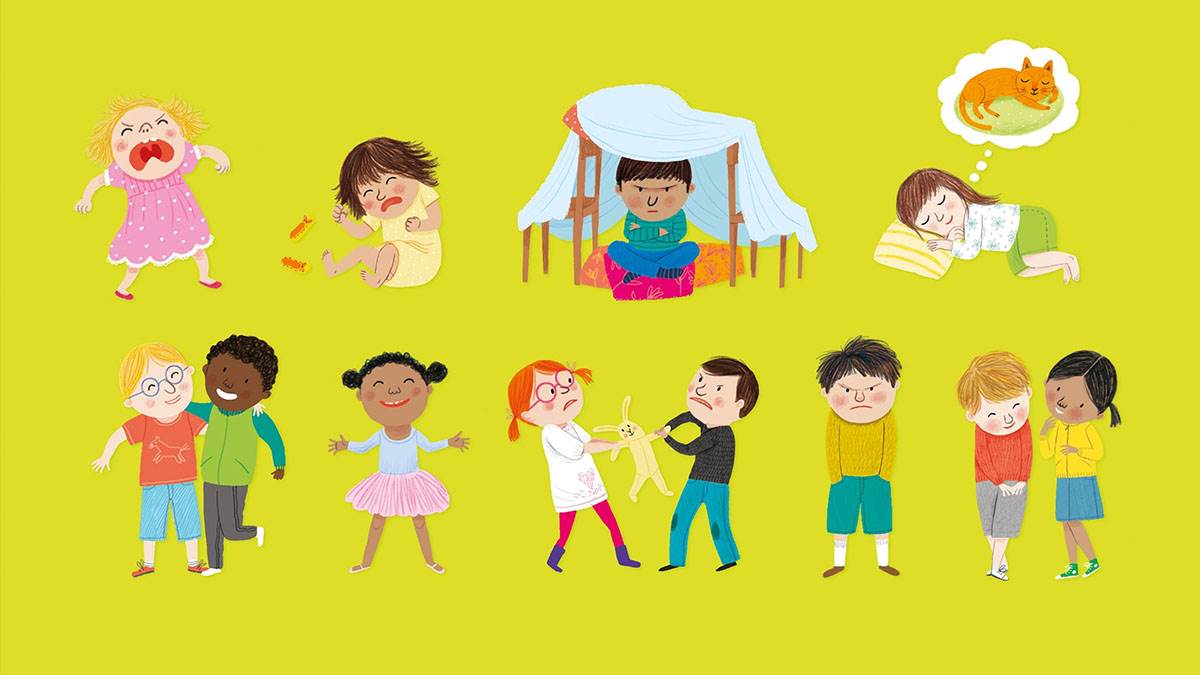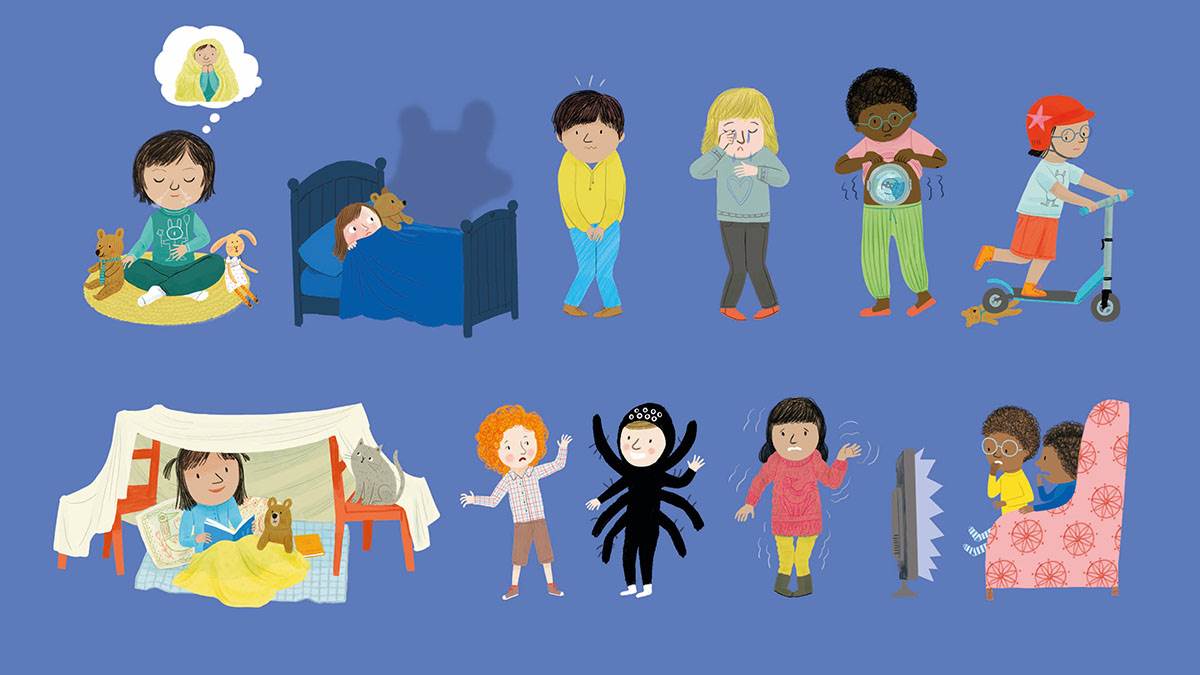How to use books to help children understand feelings
Published on: 08 August 2022 Author: Felicity Brooks
Author of the All About... series, Felicity Brooks is an expert in making tricky topics friendly and accessible to young children.
Her books celebrate feelings, friendship, empathy, families and diversity. Here she suggests useful ways to talk to young children about emotions...

How are you feeling today?
This seems such a straightforward question, but it's one that many young children (and even some adults) may struggle to answer. Being able to respond to this question is a key stage in children's development and of great importance in making and maintaining good friendships, coping with anxiety, effective learning and good mental health.
It's also one of the questions that children learn to answer (and ask) in All About Feelings, All About Worries and Fears and All About Friends. These books, aimed at children aged 4-7, help young readers to practise some of the skills of emotional intelligence: recognising, understanding, naming, expressing and (eventually) managing their emotions.
As with any others, it takes time to learn and practise these skills, and children acquire them in different ways and at different stages.
So, what can adults do to help? The answer is LOTS!
Recognising feelings starts when babies and toddlers learn to interpret the facial expressions and body language of the people around them. Pointing to pictures of faces in books, reading stories and talking about how the characters are feeling can help them begin to build the vocabulary they will soon need to talk about their own feelings, as well as planting the seeds of the idea that other people have feelings too.
Noticing and being able to name feelings comes next and to help with this process, in All About Feelings, we use a colour code to represent visually broad categories of feelings (red for angry, yellow for happy, blue for sad and green for calm).
This technique can be useful with children who are (or choose to be) non-verbal. You could put up a colour chart for them to point to, or give your children coloured cards with emoji faces which they can use to show you how they are feeling.

Illustration: Mar Ferrero
You can also help children to identify the 'body messages' that signal that they are hungry, tired, cold, and so on. These physical feelings sometimes get muddled with physiological responses linked to emotions: they might have a 'fizzy tummy' when they feel anxious or get sweaty and breathless when they are nervous, for example. Such reactions are normal and will pass, but it's good for them to know that. Teaching a simple, calming breathing technique to children of this age can be really helpful.
With older children, using a wider range of feelings words in everyday conversations and inviting them to describe how they feel makes it easier when difficult feelings come up. You could say (for example), 'I feel frustrated that we can't play football today. How about you?' or 'It's disappointing that Rani can't come over to play today, isn't it?'
It's useful to remember that children can't help their emotions and that they're important and real to them, so try not to ignore or deny their feelings or immediately divert attention away from them. The key is to acknowledge and validate what they are feeling using statements such as, 'I can see you're feeling annoyed. I'd feel annoyed too if that happened to me.'
Dealing with fear and anxiety
When it comes to the strong emotions of fear and anxiety, it's tempting to try to remove all sources and triggers from our children's lives, but in the end this would do them no great favours. It's normal (and even healthy) to feel some fear and anxiety as it can prepare us for potentially dangerous situations, help us meet challenges and sharpen our minds to perform well in stressful situations.

Illustration: Mar Ferrero
But everyone needs to be aware of when anxiety and stress levels stop being 'normal' and become so overwhelming they stop us doing things we usually enjoy, stop us feeling happy and begin to have an impact on our overall wellbeing.
What we CAN do is aim to give children enough opportunities to learn to manage risks and challenges themselves and develop the resilience they need to bounce back after times of disappointment, failure and so on. If, from an early age, children learn how to recognise and manage their emotions, they won't become overwhelmed by them.
All About Worries and Fears concentrates on helping children learn to calm themselves. For children under 7, 'talking' techniques are usually less effective than 'distraction activities', such as exercise, playing games and doing art projects, along with 'mindful' breathing and relaxation.
Even though 'doing' tends to work best, it's still a good idea to help children put their worries into words. Children who don't learn to process feelings well can get 'stuck' emotionally and may find it hard to deal with everyday challenges.
20 ways to help children learn to manage their anxieties
These are taken from the 'Notes for Grown-Ups' section in All About Worries and Fears.
- Help them to understand that difficult feelings are part of everyday life, that there are ways to manage them and that they will pass.
- Don't avoid all situations that they find stressful. (Avoidance can make anxiety worse.)
- Don't always rush in to try to fix or solve whatever is upsetting your child (unless a situation is actually dangerous, of course).
- Teach them how to think of possible solutions to problems and ways to manage their feelings. Listen and ask questions to help them come up with their own solutions.
- Help them learn the vocabulary to name and talk about feelings, and let them know that they can always ask for help if they feel anxious.
- Let them hear you talking about your own feelings and strategies for managing and solving problems.
- Practise a deep breathing and counting technique with them, so that they learn how to slow down their breathing and heartbeat when they are feeling anxious.
- Role-play meeting and greeting with toys to help children develop social skills – especially those who have social anxiety (extreme shyness).
- Encourage outdoor play and, if you can, provide resources such as games, jigsaws, crayons and paper for indoor activities.
- Help them make a 'worry box' from a shoe box with a slot cut into the top. They can post pictures, doodles and writing about their worries into the box to help them let go of them.
- Buy or make some 'worry dolls' – tiny dolls inside a small bag. Your child tells their worries to the dolls, then puts them back in the bag one by one.
- For children who are constantly expressing worried thoughts, you could try instigating 'worry time' – a period of 15 minutes a day when they can talk about their worries. Explain that the rest of the time they don't need to think about them.
- Prepare your child before a big or new event, such as a house move or hospital appointment. Let them know what's likely to happen and why.
- Try to stick to regular and soothing routines, especially around bedtime. Read and maybe sing and let children know they are safe and loved.
- Read all kinds of stories, not only happy ones. Talking about emotions in books is a good way to understand them and to build empathy (the ability to imagine how others are feeling).
- Books can also be useful to help older children talk about big things that may be upsetting them, such as bereavement, separation or illness.
- Encourage children to think about and be grateful for the everyday good things in their lives, and think about positives: What are they good at? What do they like about themselves?
- Help them make a 'Book About Me' to help build their self-esteem.
- Help them understand mistakes aren't failures but the way that we learn and get better at things.
- Monitor what they watch so that they are not exposed to inappropriate scary images on screens.
Given time, most children grow out of their anxieties, but in the meantime, try these activities and offer them the help and reassurance they need with plenty of hugs when they feel anxious.
However, if you feel your child's anxiety is starting to affect their everyday life, it's a good idea to talk to your GP or Health Visitor.
Books and mental health
Get more top tips, advice and book recommendations to help you support your child's wellbeing.
Books to support a healthy mind
We've put together a list of brilliant books that could help you support your child's mental health and wellbeing.
Topics: Mental health, Features







